|
The identification of children with autism has increased dramatically in schools. To meet the need for special education teachers with concentrated knowledge of how to serve those children directly, as well as how to provide support for non-special education teachers who provide instruction for children with autism, the Department of Special Education & Multiple Abilities at The University of Alabama has developed an exciting new innovative program with certification in autism.
Contact Dr. Laci Watkins for more details about application requirements and admission to the program.
0 Comments
The University of Alabama's Dr. Susan W. White, in collaboration with Dr. Brenna Maddox at the University of Pennsylvania and Dr. Carla Mazefsky at the University of Pittsburgh, have co-edited the new Oxford Handbook for Autism and Co-Occurring Psychiatric Conditions.
From the publisher: Co-occurring psychiatric conditions are extremely common among people who have autism spectrum disorder (ASD). The Oxford Handbook of Autism and Co-Occurring Psychiatric Conditions presents a compilation of the latest research in this area, summarized by internationally renowned experts. Each chapter presents an overview of the problem or disorder including information on prevalence in ASD and in the general public and a synthesis of the research on etiology, diagnostic best practices, and evidence-based intervention approaches. Case studies bring these concepts to life, and each chapter concludes with suggestions for future research directions in order to further develop our scientific and clinical understanding of the particular comorbidity. Given the fact that comorbidity is often a chronic and pervasive concern, this Handbook takes a lifespan approach, with each chapter touching on developmental aspects of the targeted problem, from early childhood through adulthood. The concluding section of the Handbook is comprised of content on clinical considerations and research approaches, including chapters on medications commonly used to treat co-occurring conditions, strategies for managing crisis situations in this clinical population, and community partnerships within an implementation science framework. The 19th Annual Alabama Autism Conference will be held at the Bryant Conference Center in Tuscaloosa, Alabama on February 28, 2020. The conference presents the latest research regarding diagnosis and treatment of Autism Spectrum Disorder (ASD). This year's theme will focus on Emerging Trends: Filling Gaps in Our Understanding of ASD.
For more information on the conference and to register, please visit https://training.ua.edu/autism/index.php Neuroanatomical and functional abnormalities of the cerebellum have been reported relatively widely in individuals with autism spectrum disorder (ASD). The cerebellum is considered to modulate information processing and its connections with the cortex impacts wide-ranging functions. In a new functional MRI study published in the Journal of Autism and Developmental Disorders, Bednarz and Kana examined the connectivity of the cerebellum with different networks in the cortex (e.g., executive network, salience network, and default mode network) in children with ASD using resting state functional MRI. Data from the Autism Brain Imaging Data Exchange (ABIDE-II) Database was used for this study. The main finding was significant hyperconnectivity between cerebellum and cortical networks in children with ASD relative to typically developing children. The findings of this study underscores the importance of connectivity models of autism, and the need for investigating cerebro-cerebellar connectivity.
Caregiver-implemented intervention is a common approach to supporting very young children with or at risk for ASD and their families, and it is often facilitated via coaching. This systematic review examines four coaching components across the literature on caregiver-implemented intervention with infants and toddlers with or at risk for ASD. Results indicated that most of the 26 reviewed studies highlighted components such as building on caregivers’ competence and guided practice, yet many failed to address collaborative coaching components (e.g., planning, reflection, and decision making), which are important aspects of supporting caregivers. Gaps in the literature on caregiver-implemented intervention remain, as few of the reviewed studies described the use of all four coaching components.
Emerging adulthood is a period of heightened risk for young people with autism spectrum disorder (ASD). Due in part to a lack of evidence-based services and supports during the transition to adulthood, many emerging adults fail to matriculate into postsecondary education or thrive in productive employment. The Stepped Transition in Education Program for Students with ASD (STEPS) was developed to address the psychosocial, transition-related needs of emerging adults with ASD. 59 adolescents and emerging adults with ASD were randomly assigned to either STEPS or transition as usual (TAU). Results indicate that STEPS is acceptable to young people with ASD and their parents and that it can be implemented with high fidelity. Among secondary school students, those who completed STEPS exhibited significantly greater gains in transition readiness from high school, and these gains were largely sustained after program completion. Among students enrolled in postsecondary education, STEPS resulted in increased levels of student adaptation to college relative to those in TAU. Programming to address ASD-related challenges can promote successful educational transitions.
Deficits in emotion regulation (ER) are commonly observed in individuals with ASD and may contribute to elevated rates
of psychiatric comorbidity. The objective of this study was to understand the relationship between ER (self-and caregiverreported) and clinician-assigned mood and anxiety disorders in emerging adults with ASD (n = 27). Individuals with an anxiety or mood disorder demonstrated significantly greater involuntary engagement (IE) for ER than those without an anxiety or unipolar depression diagnosis. Furthermore, those without anxiety or depression reported significantly more voluntary engagement (VE). However, consistent with prior findings outside of ASD, IE appears closely associated with internalizing diagnoses, even when VE is also utilized. Research on clinical approaches to reduce reliance on involuntary approaches to emotion management should be pursued. 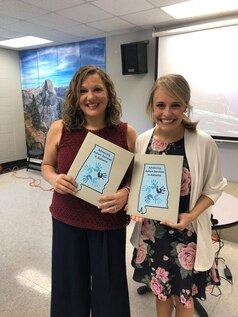 Dr. Angie Barber and Kimberly Tomeny Dr. Angie Barber and Kimberly Tomeny Dr. Angie Barber of Communicative Disorders and Kimberly Tomeny, a doctoral candidate in Special Education and Multiple Abilities, have partnered with Alabama's Early Intervention System to conduct statewide workshops to help bridge the research-practice gap in ASD. The workshops focus on supporting early interventionists as the frontline providers serving families of our youngest children showing red flags for autism. 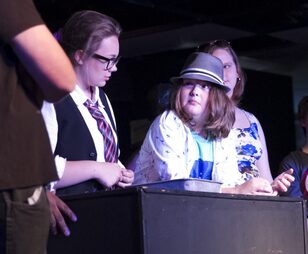 SENSE Theatre recently completed its second cohort by performing a live, original script at Tuscaloosa Academy. Program participants include children with and without autism spectrum disorder. SENSE Theatre recently completed its second cohort by performing a live, original script at Tuscaloosa Academy. Program participants include children with and without autism spectrum disorder. ‘Come Inside and Meet All of My Friends’ By David Miller SENSE Theatre recently completed its second cohort by performing a live, original script at Tuscaloosa Academy. Program participants include children with and without autism spectrum disorder. Thirteen-year-old McKade Zimmerman enjoys creating art but typically shies away from performing in front of crowds. He is “content to do his own thing,” but as a teenager with autism spectrum disorder, social interaction is vital to transitioning to adulthood. So, while some may be surprised to see Zimmerman on a theater stage, in costume, rapping and flawlessly delivering lines, his mother, Alex, anticipated it; she’d been eagerly watching McKade “come out of his shell” during the last few months of rehearsal. McKade played a “Slade” in an original script, “The Makeover,” an hour-long play about a teenage girl’s social readjustment to a new school. It featured three songs and lines by participants and their peer mentors. The performance wrapped the second cohort for SENSE Theatre, a novel ASD intervention that combines peer mediation and theater to address emotional issues in children with ASD. Despite Alex’s initial skepticism, McKade and his 10-year-old brother, Jacob, enrolled in the program last spring, with McKade randomly assigned to SENSE, and Jacob to Tackling Teenage Training, a program that teaches youth with ASD about psychological, social and sexual development. The changes in her boys’ habits, behaviors and interactions became more noticeable each day. For instance, McKade was enthusiastic about rehearsals and memorized the names of all cast members. “Even today, when we got to rehearsal, McKade said to me, ‘come inside and meet all of my friends,’” Alex said. “He’s never done that. The socialization they get here is extremely helpful, and having the mentors has helped McKade come out of his shell.” Jacob, often opinionated and ultra inquisitive, has become more aware of cultural norms, particularly as it relates to the changes he is experiencing in his body. “Being a mother of children with autism, I don’t know how to explain a lot of stuff to [Jacob],” Alex said. “So I enjoy him getting to learn things from a third party.” A packed house SENSE researchers are halfway through the trial, and early results are promising, said Dr. Susan White, director of UA’s Center for Youth Development and Intervention and site investigator. White and co-researchers collected data on perceptions, social functioning and peer interactions, as well as Electroencephalogram, or EEG, data. She said participants show greater responsiveness to social cues and increased interaction with peers. A surprising but important result, White said, is the community’s response. SENSE held its first public performance in October, and about 100 people attended. All seats were full last week, too. The public’s interest indicates the study’s intended impact of generalization is coming to fruition, in part because SENSE “doesn’t look like research” to most. “We’ve had a lot of people who have nothing to do with autism come away impressed by the performances of these young people,” White said. “It has a way of influencing, especially for kids, how they look at people with disabilities. Also, our peer mentors are coming back for a third time to do it because they’re getting so much out of it.” Connecting with one another Unearthing creativity and discovering one’s talents doesn’t happen easily, especially if one faces a social barrier. For Alikah Hartley, a rising junior at Brookwood High School who completed her second stint as a peer mentor, helping introduce others to their first experiences in theater was an easy sell, though she’d never worked with anyone with ASD. Themes of “adolescent strife” and identity development are intentionally included in the original scripts for each play, and each rehearsal and performance reflects that, Hartley said. “It comes back to being important for everybody to be able to stand and talk and be on stage and tell those stories,” Hartley said. “The students with ASD get involved and want to be involved just as much as everyone else there.” Hartley is encouraged by the program’s inclusiveness and is interested in the potential of using performing arts in an educational capacity. It’s important, as she discovered early, to not carry the burden of teaching about autism, but about everyone “enjoying similar things.” “They came in with their knowledge of who they were,” Hartley said. “It wasn’t about that for them, as much as it was experiencing theater.” Original story posted at: https://www.ua.edu/news/2019/06/come-inside-and-meet-all-of-my-friends/ |
|
|
Accessibility | Equal Opportunity | UA Disclaimer | Site Disclaimer | Privacy | Copyright © 2020
The University of Alabama | Tuscaloosa, AL 35487 | (205) 348-6010 Website provided by the Center for Instructional Technology, Office of Information Technology |

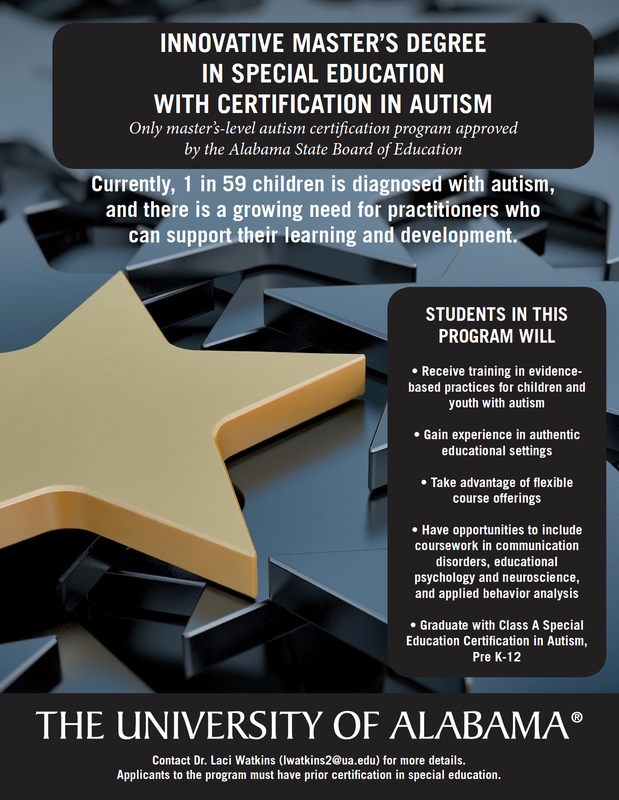
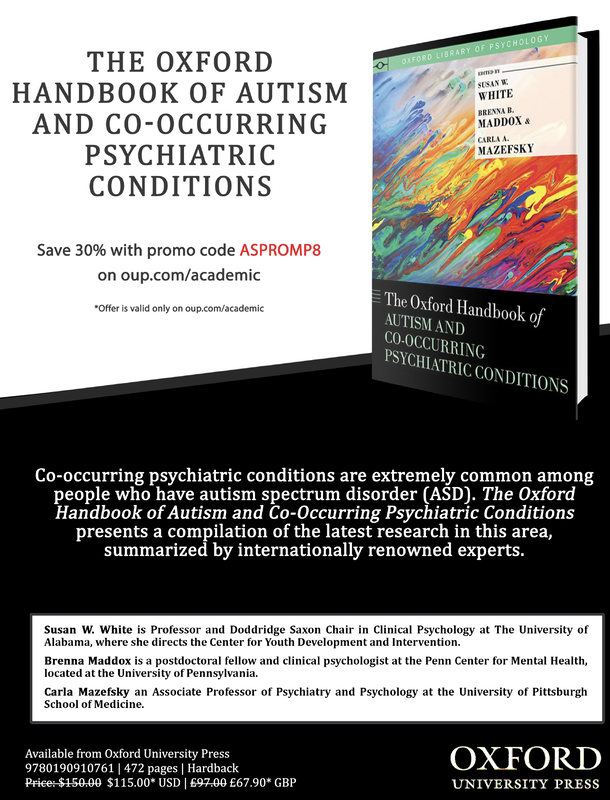

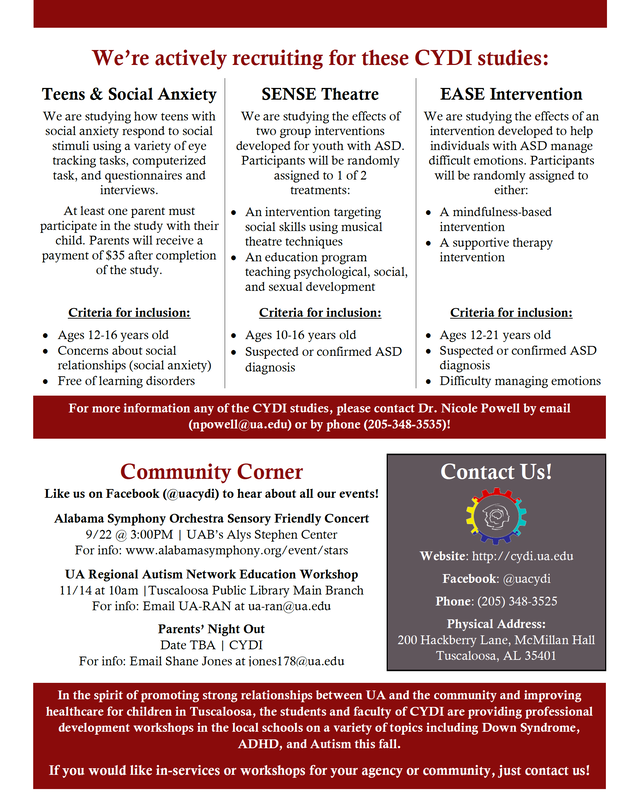
 RSS Feed
RSS Feed
